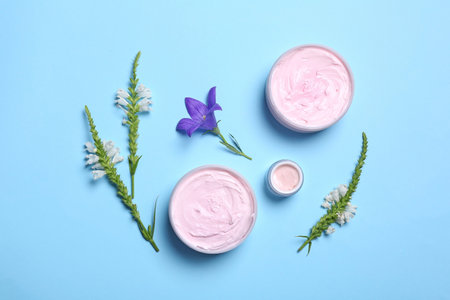Introduction to Essential Oils in Organic Skincare
Essential oils have become a buzzword in the American organic skincare community, celebrated for their natural origins and potent properties. But what exactly are essential oils, and why are they making such waves across the U.S.? Essential oils are concentrated plant extracts obtained through methods like steam distillation or cold pressing, capturing the “essence” of a plant’s fragrance and therapeutic compounds. Their use dates back thousands of years, with roots in ancient Egyptian, Greek, and Chinese cultures for beauty, wellness, and spiritual practices. Today, Americans are embracing essential oils as clean alternatives to synthetic ingredients, aligning with the broader movement toward holistic health and eco-conscious living. The appeal lies not just in their botanical allure but also in their ability to provide sensory experiences that connect users to nature and tradition. As organic skincare continues to gain traction, essential oils are increasingly seen as both effective and culturally relevant tools for self-care and personal expression.
Popular Essential Oils and Their Benefits
Essential oils have become go-to ingredients for many Americans seeking cleaner, greener alternatives in their skincare routines. Among the wide variety of options, a few stand out for their popularity and proven benefits. Lets take a closer look at some of the most commonly used essential oils in organic skincare—lavender, tea tree, and chamomile—and explore why they appeal to those wanting natural solutions.
| Essential Oil | Main Skin Benefits | Why Americans Love It |
|---|---|---|
| Lavender | Soothes irritation, calms redness, supports skin healing, offers relaxation through scent | Its gentle nature is great for sensitive skin and stress relief, making it a staple in self-care routines |
| Tea Tree | Antibacterial, helps with acne and blemishes, controls oil production, soothes inflammation | Valued for its effectiveness against breakouts and oily skin without harsh chemicals |
| Chamomile | Reduces redness, calms sensitive skin, promotes even tone, anti-inflammatory effects | A favorite for those with easily irritated or allergy-prone skin looking for gentle care |
These essential oils are not just trendy—theyre trusted by American consumers who want results without synthetic additives. Lavender is often chosen for its versatility and calming scent, which fits perfectly into nighttime skincare rituals. Tea tree oils reputation as a natural acne fighter has made it a hero ingredient among teens and adults alike. Meanwhile, chamomile stands out for people with delicate skin types who need soothing, non-irritating care. When used correctly and mindfully within organic formulations, these oils can help address common skin concerns while aligning with the values of clean beauty enthusiasts.

3. How Essential Oils Fit into Clean Beauty Trends
The clean beauty movement in the U.S. has rapidly gained momentum, with consumers increasingly seeking products that are both effective and ethically produced. Essential oils have found a natural home within this trend, as they align with the movements core values of transparency, sustainability, and minimalism. Shoppers today are more educated and curious about what goes into their skincare products, often reading ingredient lists and researching sourcing practices before making a purchase. Essential oils, being plant-derived and often associated with organic or eco-friendly farming methods, appeal to those looking for alternatives to synthetic fragrances and harsh chemicals.
Transparency is a major driving force behind clean beautys popularity. Brands incorporating essential oils are expected to disclose not only the source of their ingredients but also how they are harvested and processed. This demand for openness has led many companies to provide detailed information about the origins of their essential oils, sometimes even highlighting fair trade partnerships or supporting small-scale farmers. For American consumers who prioritize wellness and environmental impact, these details can be a deciding factor when choosing between brands.
Sustainability also plays a significant role in the intersection of essential oils and clean beauty. Many U.S.-based brands now emphasize responsible sourcing practices—such as wild-harvesting with respect for biodiversity or using organic certification—to reassure customers that their purchases do not contribute to ecological harm. However, this focus on sustainability goes beyond just the ingredients themselves; packaging choices like recyclable containers and reduced plastic use also reflect broader concerns within the clean beauty community.
Ultimately, essential oils in organic skincare serve as both an aromatic experience and a statement about personal values. For Americans navigating the vast world of beauty products, choosing skincare infused with essential oils is often about more than just results—it’s about supporting transparency, ethical sourcing, and environmental stewardship while embracing holistic self-care.
4. Risks and Sensitivities: What You Should Know
While essential oils can be a powerful part of organic skincare, it’s important to recognize that “natural” doesn’t always mean “risk-free.” Essential oils are highly concentrated plant extracts, and improper use may lead to unwanted side effects. Below, we address some key concerns and share safety tips recommended by dermatologists.
Common Risks Associated with Essential Oils
| Risk | Description | Prevention Tips |
|---|---|---|
| Allergic Reactions | Redness, itching, swelling, or hives after application. | Always do a patch test before full use. |
| Sensitivities | Certain skin types (especially sensitive or compromised skin) may react more strongly to essential oils. | Start with lower concentrations; dilute properly with carrier oils. |
| Photosensitivity | Citrus-based oils like lemon or bergamot can cause sun sensitivity, leading to burns or pigmentation. | Avoid sun exposure after use; use these oils only at night. |
| Irritation from Misuse | Using undiluted oils or applying too frequently can irritate the skin barrier. | Follow recommended dilution ratios; less is more! |
Dermatologist Recommendations for Safe Use
- Patch Test: Apply a small diluted amount on your forearm and wait 24 hours to check for reactions before using on your face or body.
- Dilution Is Key: Most essential oils should be diluted to 1–3% in a carrier oil (like jojoba or sweet almond) for topical use.
- Avoid Certain Oils if Pregnant or Have Health Conditions: Not all essential oils are safe for everyone—consult your doctor or dermatologist if unsure.
- Avoid Eyes and Mucous Membranes: Essential oils can cause severe irritation if they come in contact with sensitive areas.
When to Seek Professional Advice
If you experience persistent redness, blistering, swelling, or any severe reaction after using an essential oil product, stop immediately and consult a board-certified dermatologist. Remember: Just because something is plant-based doesn’t mean it’s suitable for all skin types. By staying informed and cautious, you can enjoy the benefits of essential oils while keeping your skin happy and healthy.
5. Guidelines for Safe & Effective Use
Integrating essential oils into your organic skincare routine can be both rewarding and beneficial, but safety always comes first. Here are some best practices to ensure you get the most out of these potent plant extracts without putting your skin at risk.
Dilution: Less Is More
Essential oils are highly concentrated and should never be applied directly to the skin in their pure form. Always dilute essential oils with a carrier oil, like jojoba or sweet almond oil, before use. A common guideline is to mix 1-2 drops of essential oil per teaspoon of carrier oil for facial applications. This helps minimize irritation while allowing you to enjoy the benefits safely.
Patch Testing: The First Step Before Full Use
Before slathering a new blend all over your face, perform a patch test on a small area of your skin—like the inside of your wrist or elbow. Wait 24 hours to check for signs of redness, itching, or swelling. If any reaction occurs, discontinue use immediately. This simple step is crucial for preventing unwanted allergic reactions or sensitivities.
Consulting Professionals: When In Doubt, Ask
If you’re unsure which essential oils are suitable for your skin type or have specific concerns (such as pregnancy, chronic skin conditions, or allergies), consult a licensed dermatologist or certified aromatherapist. They can offer personalized advice and help you avoid potential pitfalls unique to your needs and lifestyle.
Additional Tips for Everyday Use
- Store essential oils in dark, glass bottles away from heat and sunlight to preserve their potency.
- Keep oils out of reach of children and pets.
- Avoid using photosensitive oils (like citrus) before sun exposure, as they can increase the risk of sunburn.
Empower Your Routine With Knowledge
By following these guidelines—diluting properly, patch testing diligently, and seeking professional guidance—you’ll be better equipped to make confident decisions about incorporating essential oils into your organic skincare journey. Remember, every skin story is unique; embrace what works best for you while prioritizing health and safety.
6. Conclusion: Making Mindful Choices in Organic Skincare
As we wrap up our exploration of essential oils in organic skincare, it’s clear that these potent plant extracts offer both exciting benefits and notable risks. Essential oils can elevate your skincare routine with their natural fragrances and potential skin-loving properties, but they also require careful consideration—especially when it comes to allergies, sensitivities, and the unique needs of diverse skin types across the U.S. community. By staying informed and weighing both the positives and possible drawbacks, you empower yourself to make choices that reflect your values, needs, and individuality. Whether you’re drawn to lavender for relaxation or tea tree oil for its clarifying effects, remember to patch test, consult professionals as needed, and celebrate your personal journey toward wellness. Embracing essential oils safely means honoring both science and self-expression—making space for everyone to find what works best for them in a truly inclusive way.


